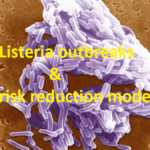FDA was slow to react to the complaints of infants’ illnesses and hospitalization after consuming powdered infant formula produced by Abbott in Sturgis, MI. Upon inspection of the facility, the FDA found several positive Cronobacter samples from the environment. An extensive recall was initiated. The recalled products were distributed across the US and exported to many countries. The recall resulted in a shortage of infant formula. As a result of the infant formula debacle, Dr. Califf requested on 7/2022 from Reagan-Udall Foundation to convene an Independent Expert Panel to evaluate the FDA Food Program. The report, issued on 12/2022, was...
ruth
ruth
Another year is ending, and food safety still has many challenges. The FDA reported 6 Listeria outbreaks, 5 Salmonella outbreaks and 3 E. coli outbreaks. A major food safety recall was due to Cronobacter in powdered infant formula. The FDA received complaints about 4 cases of illness or death in infants who consumed powdered infant formula from Abbott factory in Michigan. The closing of the Abbott factory in Michigan caused a nationwide shortage of infant formula. Consumer complaints of gastrointestinal illness and abnormal liver function were attributable to eating Daily Harvest French Lentil & Leek Crumbles frozen product. It caused...
ruth
Listeriosis is a severe, foodborne infection linked with high case fatality and hospitalization. The CDC estimated 1,600 people get listeriosis yearly, and about 260 die. The infection is most likely to sicken susceptible populations. Quantitative risk assessment is a practical method to assess the risks associated with microbial contamination of foods. The risk analysis models are developed by combing Monte Carlo probabilistic simulation with probability distributions inserted into the model. A quantitative risk assessment model was developed to estimate the probability of infection with Listeria monocytogenes in various RTE foods at various levels of contamination. Removing lots with counts higher...



